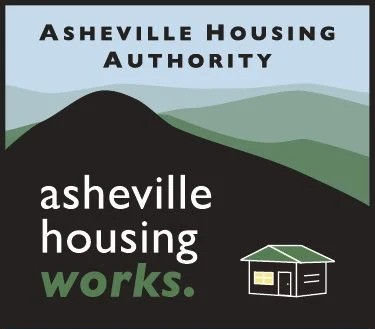Asheville’s heart-rendering stories of human suffering finally swayed City Council members to President Roosevelt’s “slum-consciousness” and the establishment of the Housing Authority of the City of Asheville effective June 12, 1940. Shortly after being awarded Federal Housing Funds in the summer of 1941, the WW II frenzy resulted in suspended funds and an inactive Housing Authority. It was not until January 3, 1949-reactivation day for the Housing Authority of the City of Asheville- that the Authority’s work began again in earnest, rededicated to “Keeping the Promise,” providing decent, safe and sanitary housing for needy human kind.
The Asheville Housing Authority began construction of its first development Lee Walker Heights in 1950, named after late Professor W.S. Lee of Stephens-Lee High School and Dr. J.W. Walker, deceased tuberculosis specialist. Opening day kept seven secretaries busy taking applications before a numbering system had to be implemented to handle the 350 applicants for the 96 modern apartments. After, the second, Pisgah View Apartments, in 1952 and the third, Hillcrest Apartments, in 1959 opened their doors, another more formidable task, face the city of Asheville.


Even with affordable housing efforts brought by the Housing Authority, large area of substandard housing and poverty still plagued Asheville. To address the task of eliminating slums and blight and restoring Asheville’s neighborhoods, the Redevelopment Commission was formed in 1958. City redevelopment was becoming a major movement in Asheville in 1967, an effort with which the Authority had always been closely associated. In 1971, the Housing Authority and the Redevelopment Commission were merged under the directorship of Ray Wheeling.
Urban redevelopment and the creation of new low-income housing brought great changes to the Asheville community. As with most housing authorities, Asheville struggled with segregation issues throughout the 60’s, achieving compliance with federal mandates in the early 70’s. The increase in civic involvement and a renewed federal commitment to domestic issues during the 60’s sparked the establishment of a wide range of new services and programs at the Housing Authority.
At the end of 1970, HUD favored leasing rather than building new units. 1977 saw the initiation of the Federal Section 8 Housing Program, further shifting the government from public housing construction to providing subsidies for the rental of privately owned homes and apartments. This resulted in a 248 unit elderly Section 8 complex on Tunnel Road called Asheville Gardens (now called Asheville Terrace), in 1980.
Today, the Housing Authority of the City of Asheville has grown to 10 public housing developments with 1,534 units, 248 special program units and administers the Housing Choice Voucher Program to subsidize housing for more than 1,355 low-income individuals and families. From the Great Depression to the Information Age, HACA has given families and others a chance to come home to a place that is more than just an address.
Check out this video UNCA students created after listening to a presentation given by CEO Gene Bell in 2008.
HACA Articles of Incorporation
For 75 years, the Housing Authority of the City of Asheville has striven to serve its residents by providing an affordable home and avenues to self-sufficiency.
View all HACA Communities
